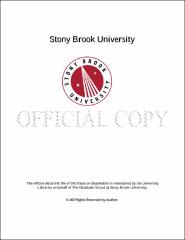| dc.identifier.uri | http://hdl.handle.net/11401/75985 | |
| dc.description.sponsorship | This work is sponsored by the Stony Brook University Graduate School in compliance with the requirements for completion of degree. | en_US |
| dc.format | Monograph | |
| dc.format.medium | Electronic Resource | en_US |
| dc.language.iso | en_US | |
| dc.publisher | The Graduate School, Stony Brook University: Stony Brook, NY. | |
| dc.type | Dissertation | |
| dcterms.abstract | Background: Genome-wide associations have been studied for years to infer relationships between biological traits and their underlying genetic causes, known as quantitative traits loci (QTL), in a process known as QTL mapping. Single nucleotide polymorphisms (SNPs), which are commonly used genetic markers, are usually in linkage disequilibrium (LD) with each other within a small genetic region. Both single- and double-marker-based LD mapping methods have been developed by taking advantage of LD structure. Method: In this thesis, a more general LD mapping framework with an arbitrary number of markers has been developed in order to improve LD mapping and its detection power. This method is referred to as multi-marker linkage disequilibrium mapping (mmLD). For the mmLD model estimation, novel two-phase estimation procedures were implemented. In the first phase, haplotype frequencies were estimated for known markers. In the second phase, haplotype frequencies, including the unknown QTL, were updated based on estimates from the first step. To test hypotheses, we used the likelihood ratio test (LRT). We propose a sequential LRT method that compares likelihood values of a reduced and an alternative model, and determines the optimal degree of freedom for testing. Results: To compare our method with other existing mapping methods, such as the single-marker LD mapping and the SKAT_C, we performed intensive simulations studies. These studies showed that our proposed mmLD method performed higher powers or equal powers to than existing mapping methods under various simulation scenarios while maintaining the correct type-I errors. The mmLD method also showed good performance for QTL mapping of the GAW17 public dataset. We conclude that the mmLD method will be useful for future association analyses. | |
| dcterms.available | 2017-09-18T23:49:43Z | |
| dcterms.contributor | Wu, Song | en_US |
| dcterms.contributor | Kuan, Pei Fen | en_US |
| dcterms.contributor | Hyman, Leslie. | en_US |
| dcterms.contributor | Hou, Wei | en_US |
| dcterms.creator | Lee, Soyoun | |
| dcterms.dateAccepted | 2017-09-18T23:49:43Z | |
| dcterms.dateSubmitted | 2017-09-18T23:49:43Z | |
| dcterms.description | Department of Applied Mathematics and Statistics. | en_US |
| dcterms.extent | 115 pg. | en_US |
| dcterms.format | Application/PDF | en_US |
| dcterms.format | Monograph | |
| dcterms.identifier | http://hdl.handle.net/11401/75985 | |
| dcterms.issued | 2015-12-01 | |
| dcterms.language | en_US | |
| dcterms.provenance | Made available in DSpace on 2017-09-18T23:49:43Z (GMT). No. of bitstreams: 1
Lee_grad.sunysb_0771E_12564.pdf: 2390360 bytes, checksum: e918259cccb5d504d43c8b3b763d7f8e (MD5)
Previous issue date: 1 | en |
| dcterms.publisher | The Graduate School, Stony Brook University: Stony Brook, NY. | |
| dcterms.subject | Statistics | |
| dcterms.subject | Linkage Disequilibrium, Multi-marker, QTL, QTL mapping, SNP | |
| dcterms.title | Multi-Marker Linkage Disequilibrium Mapping of Quantitative Trait Loci | |
| dcterms.type | Dissertation | |

